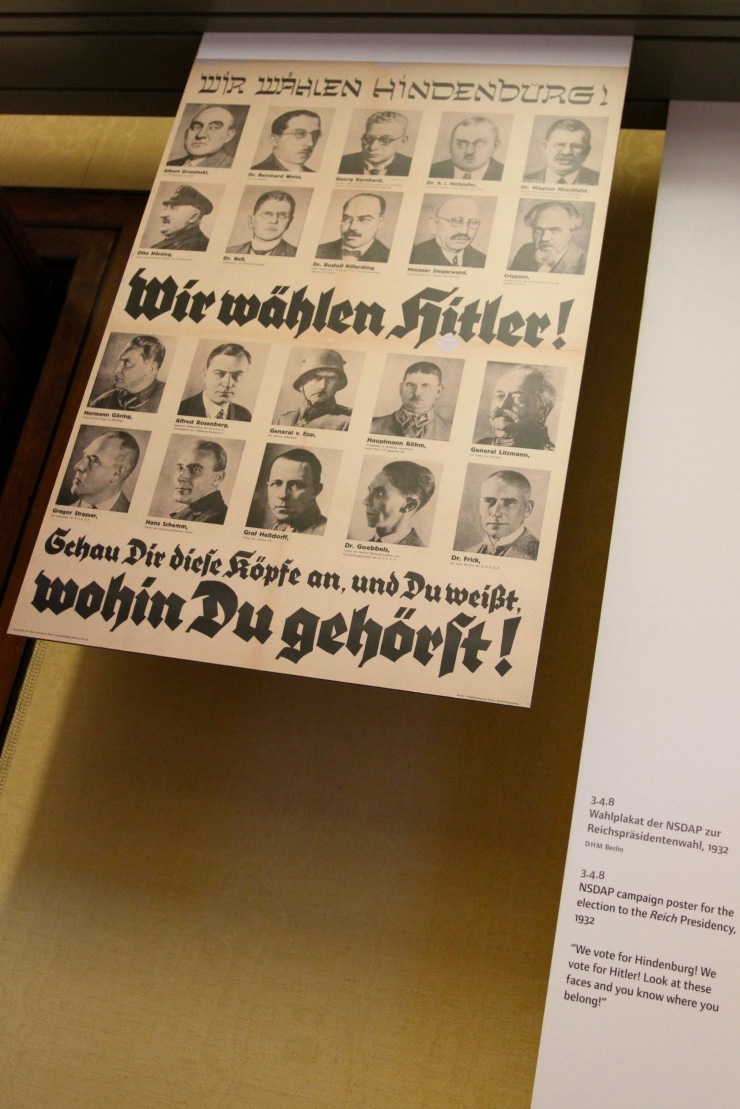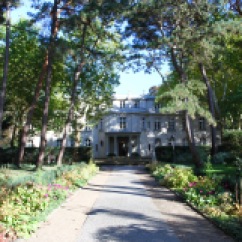There is nothing about the sleepy and picturesque lakeside hamlet of Wannsee on the outskirts of Berlin, that prepares you for the fact that this is the place where, in early 1942, the implementation of the systematic annihilation of the European Jews was discussed and agreed. I strolled along tree-lined streets, with occasional glimpses of the glittering waters of the Wannsee between imposing 19th and early 20th century villas, trying to grasp the absurdity of that reality.
On January 20, 1942, fifteen high ranking Nazi officials, who together represented the various military and civilian agencies needed to coordinate the mass extermination of millions of people, came to the villa of a former industrialist to discuss how they would implement the Final Solution. There is still some debate about the timing, but Hitler had given instructions for the Final Solution some months earlier, and everyone around the table that day knew they were discussing what we now know as the Holocaust.






Anyone who has watched the excellent and utterly chilling film, Conspiracy, knows that during the Wannsee Conference the discussions were purely bureaucratic. At no time did the attendees explicitly mention that they were agreeing upon the destruction of millions of lives. It wasn’t necessary, the coded language was understood by all. They knew “evacuation to the east” meant mass deportation of Jews to death camps already under construction or in operation in German-occupied Poland.
It’s not a coincidence that only a few months after the meeting gas chambers were installed in places like Auschwitz, Belzec, Chelmno, Majdanek, Sobibor, and Treblinka. The Wannsee Conference streamlined the smooth running machinery of a genocide that had been planned for years, the preparations for which had started in earnest with the invasion of Russia, and which was an extension of mass killings that were already happening in the east. The meeting took less than ninety minutes.
The infrastructure of the Holocaust was already in place and the Wannsee Conference was held to rubber stamp its full implementation. Even in 1942, when German armies were victorious across Europe, the men in the room were cautious about recording their conversations. Only one copy of the minutes, belonging to the Foreign Ministry’s Martin Luther, was ever found. Although heavily edited, they provided a vital insight into what occurred inside the villa that day.
I found myself reflecting yet again upon the phrase used by Hannah Arendt to describe Adolf Eichmann: the banality of evil. Eichmann was one of the participants at Wannsee, and would go on to be responsible for the transportation of millions of Jews and others to their deaths as part of the Final Solution. The phrase could easily be applied to the fifteen technocrats sat around a table in 1942 planning genocide. Somehow that makes it all the more troubling.
An hour walking through the house reading about the origins and implementation of the Final Solution left me feeling a little claustrophobic. Outside I walked around the side of the villa into the gardens that overlook the lake. The views are magnificent. Adding to the sense of absurdity, out on the lake people were sailing and having fun, and on the opposite shore sat the Wannsee Lido. A handy information board informed me that the lido had been a centrepiece of Nazi propaganda in the 1930s.
As I stared out over the water, a quote from the daughter of a Holocaust survivor that I’d read inside the house came back to me, “the past overshadows everything”. That is especially true when you discover the fate of the fifteen people who orchestrated mass murder that winter’s day in 1942. We know Reinhard Heydrich was killed by Czech patriots, that Eichmann escaped to Argentina only to be captured, tried and executed in Israel in 1962. Others, like Rudolf Lange and Alfred Meyer, committed suicide.






What, though, about those who survived the war? Otto Hofmann, Head of the SS Race and Settlement Office, was released from prison in 1954 and went on to become a business clerk in Württemberg. He died only in 1982. Gerhard Klopfer who worked for the Nazi Party Chancellery, was released from prison in 1949, worked as a lawyer and lived until 1987. Georg Leibbrandt, responsible for the Occupied Eastern Territories, was released in 1949 and lived openly until 1982, even returning to the United States to continue his studies.
It was with growing incredulity that I read and re-read the information on the fortunes of the men who had sat in the very place I now stood and planned genocide. Truly eye-opening.



















Well, maybe that’s why in current times those in powerful position are not held accountable to their dreadfully inhuman decisions. It’s a pattern …
Plenty of Australian stories of ww2 survivors who came to this country only to be shocked that their former torturers lived nearby and with immunity.
Yes, shocking.
It reminded me of my visit to Rwanda. I talked to one survivor of the genocide whose parents were murdered by someone who had been released from prison and came back to live in the same village. He saw him almost every day. It must take immense strength to face that.